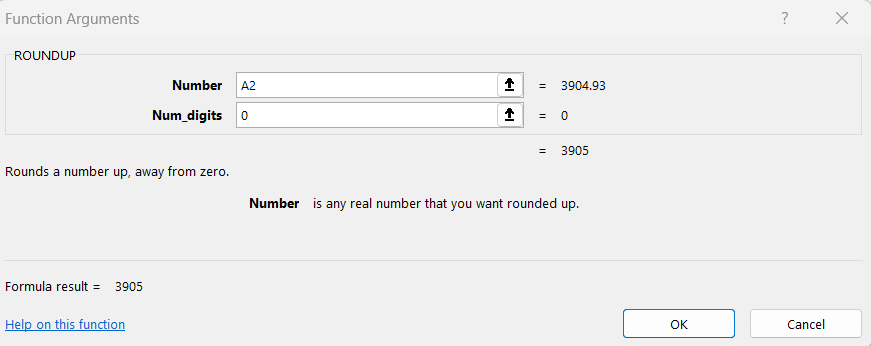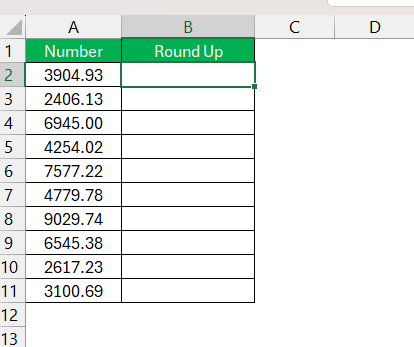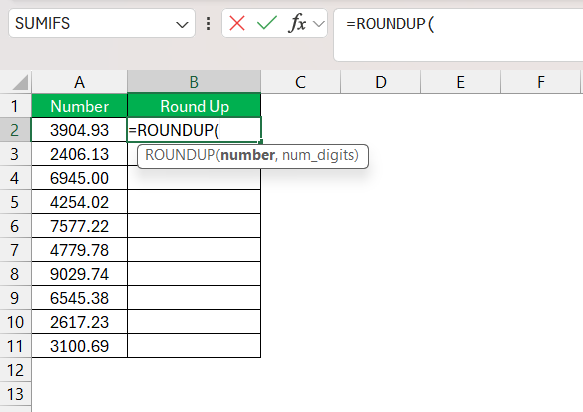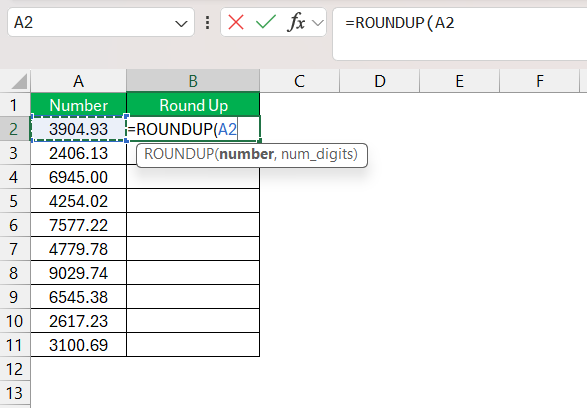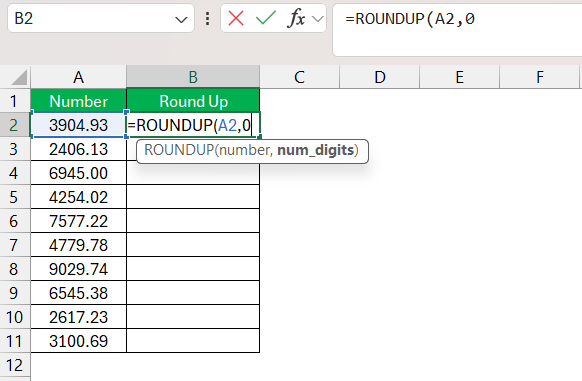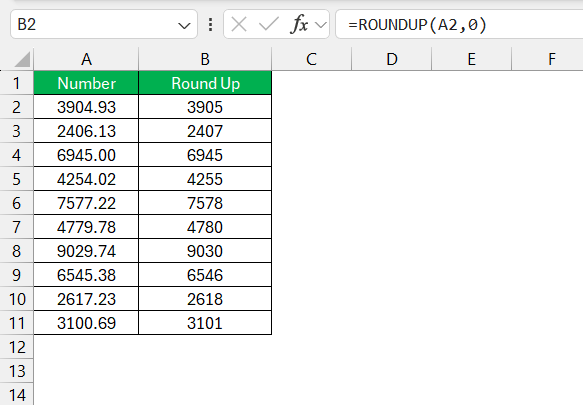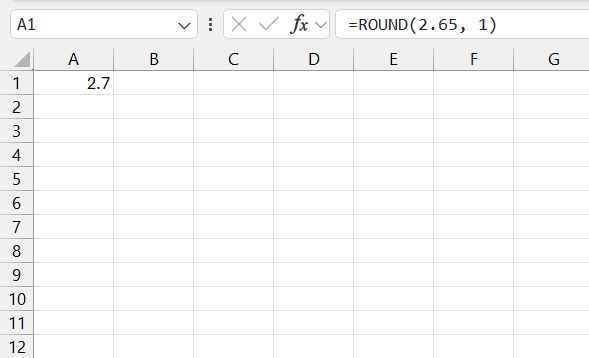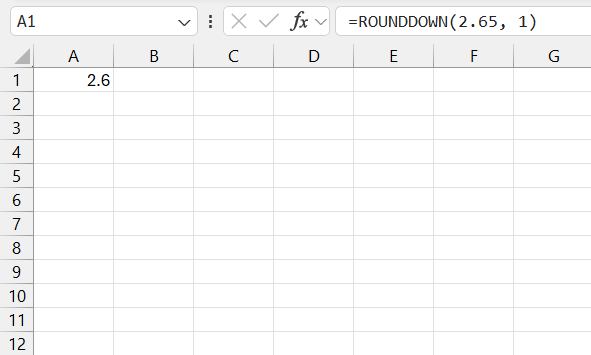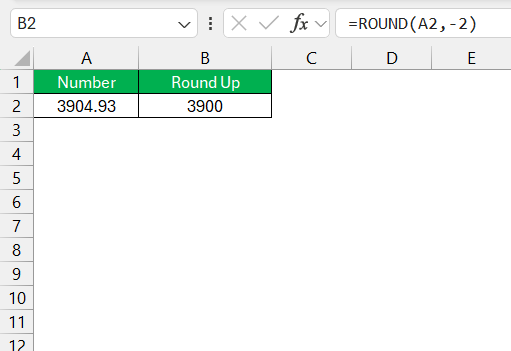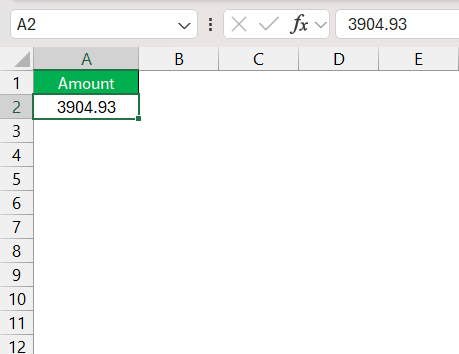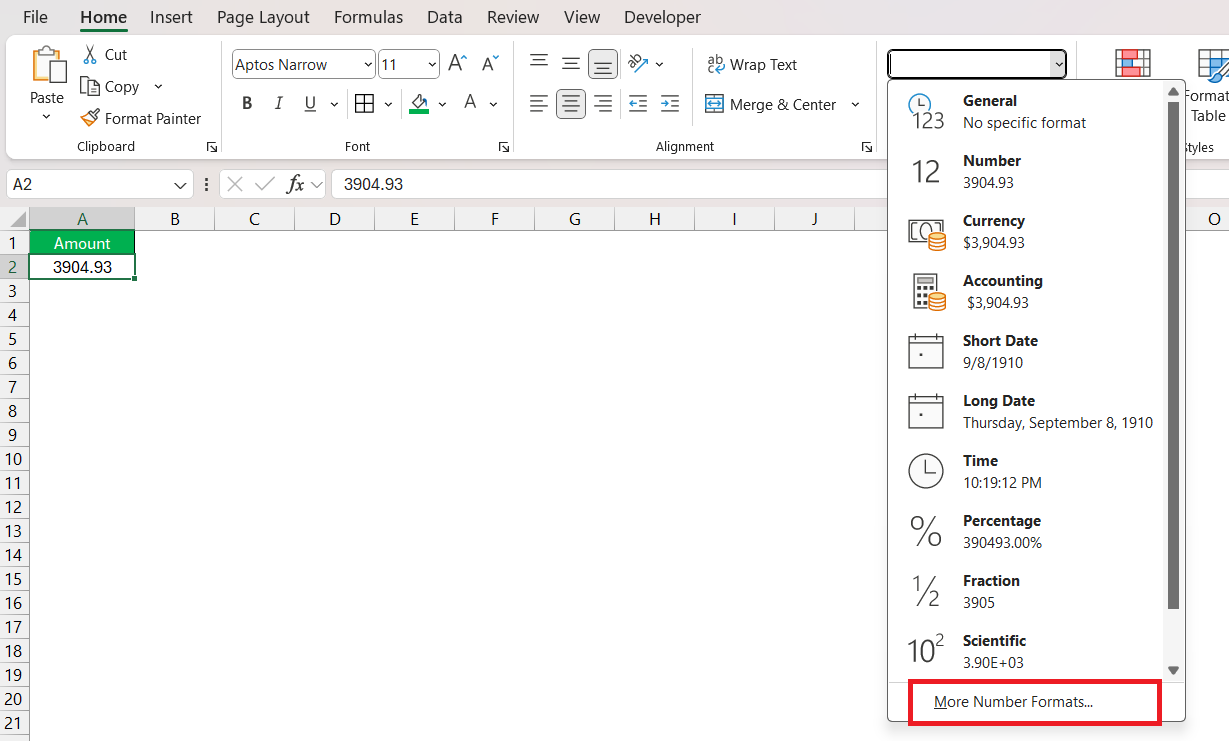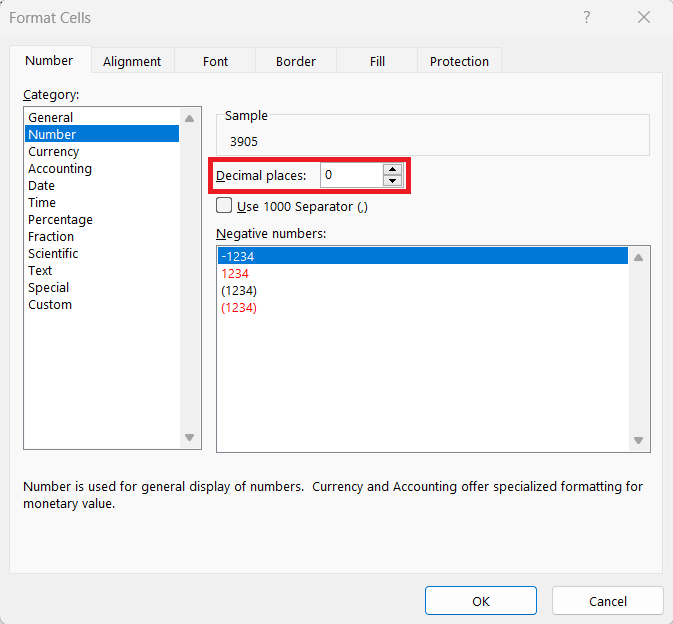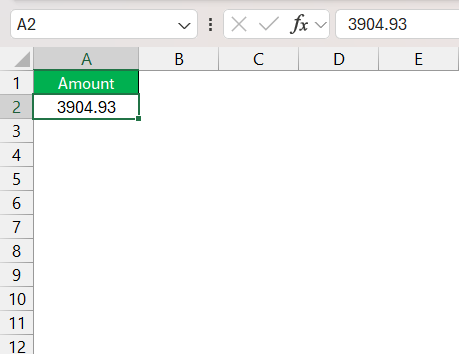When working with numbers in Excel, I often need to round up values to make calculations cleaner and more practical. The ROUNDUP function is perfect for this—it allows me to round numbers up to a specified number of decimal places, ensuring accuracy and simplicity in my data. Let me show you how it works!
Key Takeaways:
- ROUNDUP in Excel always rounds numbers up, ensuring values are never underestimated.
- It’s useful for financial projections, inventory management, and billing.
- The function’s syntax is straightforward: =ROUNDUP(number, num_digits).
- ROUNDUP differs from ROUND and ROUNDDOWN by always rounding away from zero.
- It’s versatile for rounding to whole numbers, decimal places, or larger units like hundreds.
Table of Contents
Simplifying Excel: The Power of the ROUNDUP Function
Unveiling the ROUNDUP Function
When dealing with numerical data in Excel, precision and accuracy often play crucial roles in the outcome of our calculations. This is where the Excel ROUNDUP function becomes an invaluable tool; it allows us to round any number up to a specified number of digits.
Unlike the standard ROUND function, which rounds to the nearest value based on standard rounding rules, ROUNDUP always rounds numbers away from zero. This distinctive characteristic is particularly useful when I need to ensure values are never rounded down, which could understate a sum or quantity.
Key Situations to Utilize the ROUNDUP Function
In my experience, the ROUNDUP function proves to be most beneficial in scenarios where the slightest numerical discrepancy can have significant implications. For instance, it’s an asset in financial calculations where rounding up can safeguard against underestimating expenses or liabilities. Here are several key situations where I’ve found it especially handy:
- Financial Projections: When creating projections or financial plans, rounding up ensures conservative estimates that account for potential unforeseen costs.
- Inventory Management: In managing stock levels, using ROUNDUP could mean the difference between having a surplus versus falling short, since it favors higher inventory levels.
- Billing and Invoicing: ROUNDUP helps avoid undercharging by ensuring that invoice totals are rounded up to the nearest cent or dollar, securing revenue margins.
- Statistical Analysis: In statistical reports where upper bounds are required, ROUNDUP ensures data points are not underestimated, which can be critical in trend analysis.
- Time Tracking: For payroll and billing based on hourly work, rounding up minutes ensures workers are fully compensated for their time.
These examples illustrate just a few instances where the ROUNDUP function enhances the integrity of Excel calculations. Always rounding up might not be beneficial for every context, but in these situations, it ensures that my analyses, reports, and calculations remain robust and error-free.
Mastering the Syntax and Usage
Breaking Down the Function Layout (Syntax)
Understanding the syntax of the ROUNDUP function is key to utilizing it effectively. The basic structure is straightforward and comprises two main arguments:
=ROUNDUP(number, num_digits)
Here, number represents the value that I want to round up. This can be a cell reference containing a number, a formula that returns a number, or the number itself. The num_digits parameter dictates how many digits to the right of the decimal point the number should be rounded up to. If I set num_digits to 0, Excel rounds up to the nearest whole number.
An important pointer is that when num_digits is set to a negative number, ROUNDUP will round up to the left of the decimal point. For example, -1 would round up to the nearest 10, -2 to the nearest 100, and so on. This aspect can be quite powerful when dealing with large numbers or when I need to standardize figures to specific denominations or size scales.
Step-by-Step Guide on How to Use the ROUNDUP Function
Using the ROUNDUP function is a breeze once you get the hang of it. Here’s how I usually go about employing this handy feature in Excel to round up numbers to my desired level of precision:
STEP 1: I start by clicking or navigating to the cell where I want the rounded number to appear. This is typically adjacent to the number I’m planning to round up.
STEP 2: I type =ROUNDUP( into the selected cell to initiate the function. Excel’s autocomplete feature might suggest the ROUNDUP function as soon as I start typing, which can be a swift shortcut.
STEP 3: Next, I input the number to be rounded up or the cell reference containing the number. If the latter, I’ll click the cell with the number or type its cell reference.
STEP 4: I then enter a comma followed by the number of decimal places I wish to round up to. If rounding to a whole number, I’ll use 0 here.
STEP 5: I close the function with a parenthesis and press Enter. Excel performs the magic, rounding up my figure instantly in the selected cell.
Just like that, I’ve ensured that my data is handled with the upward rounding precision I need. And because it’s integrated into the familiar Excel interface, this powerful function enhances my workflow without complication or extensive training.
Versatile Rounding Methods in Excel
ROUNDUP Versus Other Rounding Functions
When I delve into Excel’s suite of rounding functions, I find that each has its particular use cases and nuances. The ROUNDUP function distinctly always rounds numbers away from zero, irrespective of whether the number is positive or negative. This stands in contrast to alternate rounding functions, and understanding the differences is crucial to employing each one effectively:
- ROUND Function: It rounds a number to a specified number of digits. The ROUND function will round up or down following the conventional rounding rules where numbers 5 or greater are rounded up and those less than 5 are rounded down. For example,
=ROUND(2.65, 1)results in 2.7, following standard rounding.
- ROUNDDOWN Function: Just as ROUNDUP always rounds up, ROUNDDOWN always rounds down. So,
=ROUNDDOWN(2.65, 1)results in 2.6, because it moves the number down to the nearest digit specified, regardless of what the next digit is.
Comparing these, I find ROUNDUP to be particularly useful when I want to ensure that no value is ever underestimated – a common requirement in scenarios like financial forecasting or setting minimum inventory levels. Each rounding function fulfills a specific purpose.
Understanding what those purposes are enables me to apply them in the most beneficial manner within my Excel worksheets.
Customizing Rounding Precision – Round to the Nearest Unit
Customizing the rounding precision in Excel to ensure data aligns with my analytical needs is a fundamental step, especially when summarizing or presenting data.
To round to the nearest unit such as thousands, hundreds, tens, or ones, I often rely on the ROUND function, though each rounding function can be tailored to my specific needs. Let’s go through the process:
Using a Function in a Formula:
To round to a major unit using ROUND:
- Select a cell for the result of the rounded number.
- Input the ROUND formula:
=ROUND(reference, num_digits). - For
num_digits, input -1 to round to the nearest ten, -2 for the nearest hundred, -3 for the nearest thousand, and so forth. - Press Enter to execute the function.
Using Built-In Number Format:
Excel’s inbuilt formatting options also offer a neat way to control the display of rounded numbers:
- Select the cells to format.
- Go to Home > Number, click the arrow for more formats, and choose ‘More Number Formats’.
- Pick a format category like Currency, and specify the desired decimal places.
Rounding by a Button:
Somewhat less precise but good for quick adjustments:
- Select the cells for which I want to change the displayed decimals.
- In the Home tab, under ‘Number’, I use the ‘Increase Decimal’ or ‘Decrease Decimal’ buttons to adjust the decimal places shown.
I find these methods indispensable for preparing financial reports, budget forecasts, or any data set where conformity to specific numerical increments is required. They allow for precision adjustments and ensure that my data presentation is both accurate and tailored to my audience’s expectations.
FAQs: All Your ROUNDUP Questions Answered
What Exactly Does the Excel ROUNDUP Function Do?
The Excel ROUNDUP function is designed to round a number away from zero to a specified number of decimal places. Unlike the standard ROUND function, which rounds a number to the nearest value based on traditional rounding rules, ROUNDUP will always round numbers up.
This means that even if the digit that follows is less than 5, the function will still increase the previous digit. It’s particularly handy for ensuring that values in my calculations don’t fall below a certain threshold due to rounding.
How Does Rounding Work with Negative Numbers in Excel?
In Excel, when I use the ROUND, ROUNDUP, or ROUNDDOWN functions with a negative number, the rounding is based on the absolute value of the number. It follows the same rules as for a positive number but then reapplies the negative sign.
With the ROUNDUP function, negative numbers become more negative, since they ’round up’ to the next more negative number. For example, =ROUNDUP(-2.3, 0) gives me -3—the value is increased in magnitude after rounding.
Can You Provide an Example of a Complex ROUNDUP Operation?
Certainly! Imagine I’m crafting a complex budget where I need to round up the total cost of multiple items, each with a varying tax rate. I could use ROUNDUP nested with other functions.
For one item, if the pre-tax cost is in cell A1 and the tax rate is in cell B1, I can formulate =ROUNDUP(A1 + (A1 * B1), 0) to get a total cost rounded up to the nearest dollar. This combines multiplication for tax calculation and addition for the total cost within the ROUNDUP function to ensure my final figure is conservatively adjusted upward.
How to roundup to nearest 100 in Excel?
To round up to the nearest 100 in Excel, I use the ROUNDUP function with the number of digits set to -2. For example, if the number I want to round is in cell A2, my formula would be =ROUNDUP(A2, -2). This tells Excel to round the number in A2 up to the next increment of 100.
So, 250 would round up to 300, and 345 would round up to 400. It’s particularly useful for financial reporting and setting budget ceilings.
How does Excel round up to the nearest whole number?
To round up to the nearest whole number in Excel, I use the ROUNDUP function with the num_digits argument set to 0. For instance, the formula =ROUNDUP(A1, 0) would round the number in cell A1 up to the next whole number.
A number like 3.14 becomes 4, ensuring that the value is always rounded away from zero. This is a straightforward but powerful tool for ensuring my values meet minimum thresholds.
John Michaloudis is a former accountant and finance analyst at General Electric, a Microsoft MVP since 2020, an Amazon #1 bestselling author of 4 Microsoft Excel books and teacher of Microsoft Excel & Office over at his flagship MyExcelOnline Academy Online Course.

